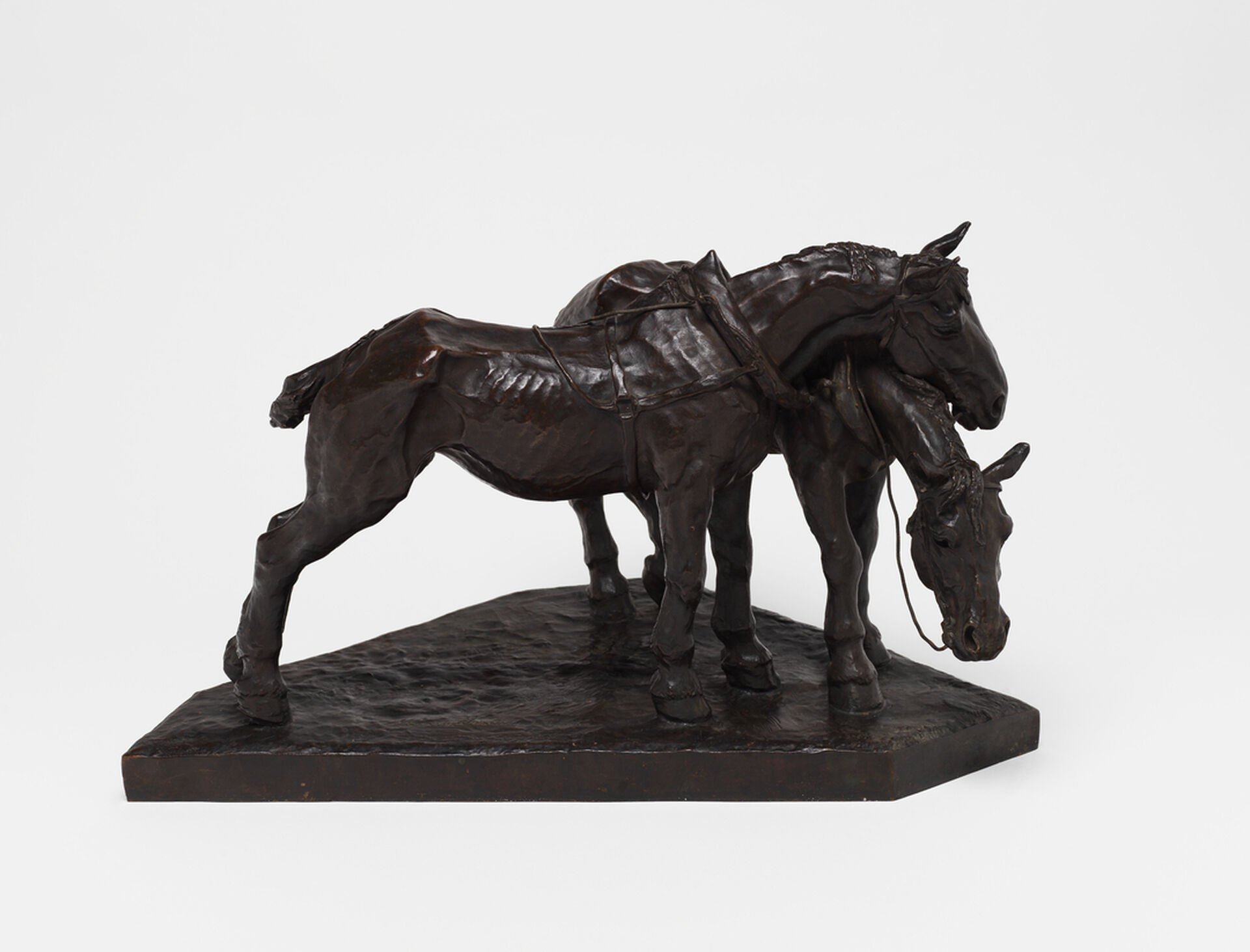Publicerad 2022-03-03
Over the past few years, Nationalmuseum has made a concerted effort to acquire more works by women sculptors. This acquisition drive was part of a wider project to gather knowledge and shed light on the Swedish women sculptors who were active at the turn of the 20th century. The results are to be presented in an exhibition at Nationalmuseum this spring and in an anthology to be published in English.
The profession of sculptor was long seen as a male preserve. It was heavy, dirty work considered unsuitable for ladies. What was more, sculptures were often placed in public spaces and frequently portrayed nude bodies, which was likewise an impediment. Nevertheless, a number of Swedish women trained as sculptors in the late 19th century. After completing their studies, most of them headed to the Continent, mainly to Paris, where they discovered new artistic ideals and greater market opportunities. The women sculptors became adept at finding new approaches and scope for collaboration, especially in the applied arts, which appealed to a wider market. Several of them enjoyed great success at exhibitions, and many remained in Paris for most of their life.
Works by these women sculptors proved popular and reached a wide audience. Sometimes they attracted praise, sometimes criticism. The genres in which women sculptors specialised – such as sentimental scenes and small genre figurines, often produced in collaboration with manufacturers – were not seen as priorities by art historians and museum curators for much of the 20th century. Consequently, many of them were more or less forgotten.
Following the acquisition drive, Nationalmuseum’s collection now includes some 30 sculptures by about a dozen women sculptors who were active in the years around 1900. Half of these pieces have been acquired in the past five years.
The sculptures include a number by Agnes de Frumerie (1869–1937), one of the women who enjoyed a long and successful career in France. She was previously represented by only one major work in the Swedish public collections (August Strindberg, purchased 1969). In recent years, three more de Frumerie sculptures have joined Nationalmuseum’s collection: the relief Source d’or or Struggle for Existence (1900), Undine (c.1901) and the figure group The Grandmother (1905).
Alice Nordin (1871–1948) is another previously under-represented sculptor by whom more works have recently joined the collection. In 1911 she was the first women sculptor in Sweden to have a solo exhibition. Her works achieved remarkably widespread popularity, not least because her figurines were reproduced by the Gustavsberg porcelain works. Her lamp designs were cast in bronze by Herman Bergmans konstgjuteri and Arvid Böhlmarks lampfabrik. She was also in great demand as a portraitist, and Nationalmuseum’s collection now includes her busts of Baroness Märtha Cederström (1910) and Mrs Clara Lachmann (1912).
Antoinette Råström Vallgren (1858–1911) is one of the sculptors not previously represented in the collection. At the turn of the 20th century she was greatly admired in Paris, creating sculptures and sculptural bookbindings in a symbolistic style that appealed to collectors of the time. The sculpture John the Baptist as a Child (1893) ranks among her most acclaimed works.
“We’re particularly pleased to present a combined exhibition of the works by women sculptors that we’ve acquired over the past few years,” said Linda Hinners, a curator specialising in sculpture at Nationalmuseum. “Many of these sculptures have not been exhibited for a very long time, and some have never been on display in a museum setting before. Creating this space for them feels like a significant step.”
The exhibition “What joy to be a sculptor!” Swedish Women Artists, 1880–1920 runs at Nationalmuseum from 17 March to 11 September 2022. To coincide with the exhibition, Nationalmuseum is publishing an anthology in English about Nordic women sculptors, in collaboration with researchers and writers from Sweden and abroad.
Nationalmuseum receives no state funds with which to acquire design, applied art and artwork; instead the collections are enriched through donations and gifts from private foundations and trusts.
Inventory numbers
Agnes de Frumerie: The Grandmother, 1905. NMSk 2365
Agnes de Frumerie: Source d’or or Struggle for Existence, 1900. NMSk 2362
Agnes de Frumerie: Undine, c.1901. NMSk 2396
Ida Matton: Loki’s Punishment, 1897. NMSk 2409
Ida Matton: Portrait study, possibly of Matilda Hanström Berendt, 1891. NMSk 2353
Ruth Milles: Yvonne, Breton Girl, 1903. NMSk 2387
Ruth Milles: Two Breton Girls, c.1901. NMSk 2406
Alice Nordin: Baroness Märtha Cederström, 1910. NMSk 2389
Alice Nordin: Mrs Clara Lachmann, 1912. NMSk 2390
Alice Nordin: Female bust, variant of Andante Patetico, c.1911. NMSk 2395
Antoinette Råström Vallgren: John the Baptist as a Child, 1893. NMSk 2397
Märta Sparre (Améen): Two Horses, c.1902. NMSk 2400
Gerda Sprinchorn: Israel’s Aunt, 1905. NMSk 2398
Gerda Sprinchorn: Big Brother, c.1905. NMSk 2359
Gerda Sprinchorn: Sitting Girl, 1905. NMSk 2394
More news from Nationalmuseum
- Portrait of Honour 2025: Sarah Sjöström publicerat 2025-11-13
- Nationalmuseum in Stockholm acquires a painting by Sofonisba Anguissola publicerat 2025-09-16
- Portrait of Honour 2024: Max Martin by Mikael Jansson publicerat 2024-10-08
- A painting in the collections of the Nationalmuseum recently attributed to the famous artist Carel Fabritius publicerat 2024-05-22
- Embroidered appliqué by Britta Marakatt-Labba publicerat 2024-03-08



